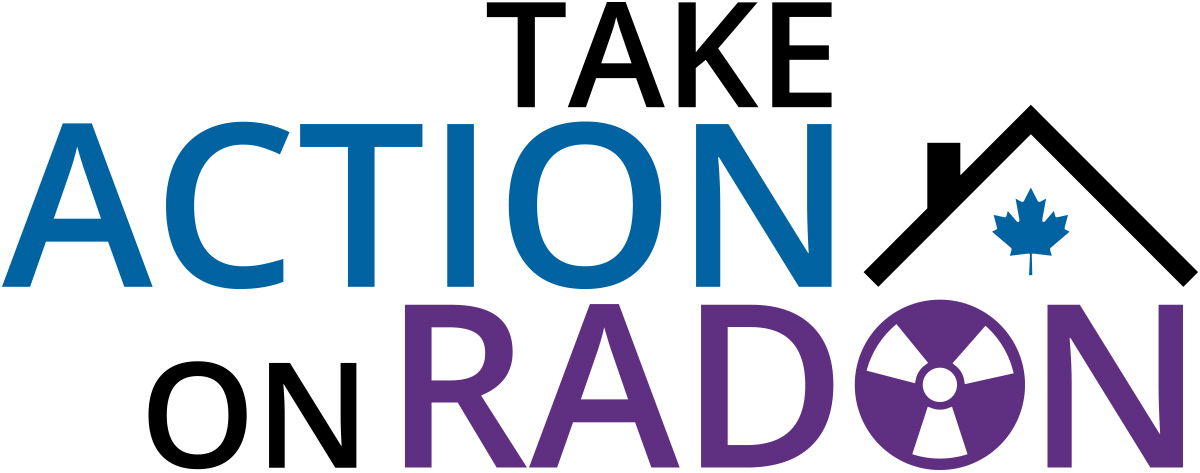Mois de la sensibilisation au radon : sensibiliser par l’éducation

November is Radon Action Month across Canada, and we need your help!
Radon is the leading cause of lung cancer in non-smokers and is estimated to cause the deaths of over 3,000 Canadians each year. Yet many people have never even heard of radon. Of those who have heard of it, many have not yet taken the critical and straightforward step of testing their homes.
Invisible, with no taste or smell, radon is a difficult poster child. The fact that radon is naturally occurring seems only to further dissuade some people from testing their homes, as does the lack of a widespread government-funded testing and mitigation program.
Canadians are not alone in their reluctance to take action to address radon. A 2016 study published by the Environmental Protection Agency of Ireland, in partnership with professor David Hervey of Trinity College Dublin, identified 11 distinct steps that must be taken prior to testing one’s home for radon, and then another five steps necessary prior to mitigating the home for radon. Here are some of the steps identified:
- Believing the information to be credible.
- Comprehending the risk and perceiving it as a threat
- Knowing how to take action.
Clearly, protecting Canadians from radon-induced lung cancer will require more than a splashy ad campaign run each November. Rather, it is a matter of ongoing messaging from credible sources, and this is where radiation safety professionals, like many of the readers of the CRPA Bulletin, come into the picture.
Radiation safety professionals have the scientific knowledge required to understand and explain the dangers posed by ionizing radiation and how damaged lung tissue DNA can mutate into cancer. As trusted experts, you are a credible source when it comes to communicating the effects of radiation—both helpful and harmful. Finally, educating the public on how they can protect themselves from radon falls neatly into your professional objectives.
Building radon awareness across our vast and diverse country is an ongoing team effort. The Take Action on Radon program was created to facilitate these efforts and has a wealth of resources to help with this.
Start with a small step this November (or anytime during the winter heating season) and reflect on how you can share information within your circle of influence:
- Consider asking your employer if your workspaces have been tested for radon or submitting a short article for your workplace newsletter about radon that tells readers where they can get a test kit.
- Share a post on your preferred social media channel (Twitter, Instagram, Facebook, or LinkedIn) with some fact-based, easy-to-understand information about radon. Take Action on Radon has templates available on their website, and they’ll be posting throughout November. Retweets and likes are always appreciated.
- Request handouts or posters from Take Action on Radon and Health Canada to share in your workplace with clients or co-workers.
Maybe you have bigger ideas? Take Action on Radon would be happy to hear about them. Reach out with your ideas, big or small, and let the program know what you’re doing for Radon Action Month 2020.
With each stakeholder who joins the radon awareness effort, new connections are made, more Canadians are moved to take action on radon, and fewer lives will be lost to preventable lung cancer.
Follow us on Facebook (@TakeActiononRadon) or on Twitter (@ActionOnRadon).
Résumé : Mois de la sensibilisation au radon : sensibiliser par l’éducation
Le radon est la principale cause de cancer du poumon chez les non-fumeurs et on estime qu’il est à l’origine du décès de plus de 3 000 Canadiens tous les ans. Pourtant, de nombreuses personnes n’ont même jamais entendu parler de ce gaz et parmi ceux qui en ont entendu parler, la plupart n’ont jamais mesuré la concentration en radon de leur foyer. Comme novembre est le mois de la sensibilisation au radon partout au Canada, l’Association canadienne des scientifiques et des technologues en radon encourage les spécialistes de la radioprotection à contribuer à la sensibilisation au radon dans leur cercle d’influence.
Erin Curry
Erin Curry est directrice régionale de l’Association canadienne des scientifiques et des technologues en radon (ACSTR) et chef de projet du programme « Occupe-toi du radon ».
Do you want to read more articles like this?
The Bulletin is published by the Canadian Radiation Protection Association (CRPA). It’s a must-read publication for radiation protection professionals in Canada. The editorial content delivers the insights, information, advice, and valuable solutions that radiation protection professionals need to stay at the forefront of their profession.
Sign up today and we’ll send you an email each time a new edition goes live. In between issues, check back often for updates and new articles.
Don’t miss an issue. Subscribe now!
Subscribe




